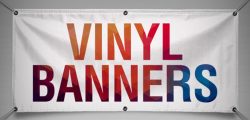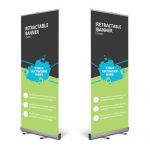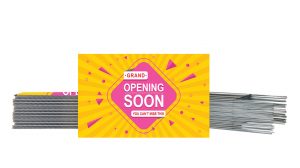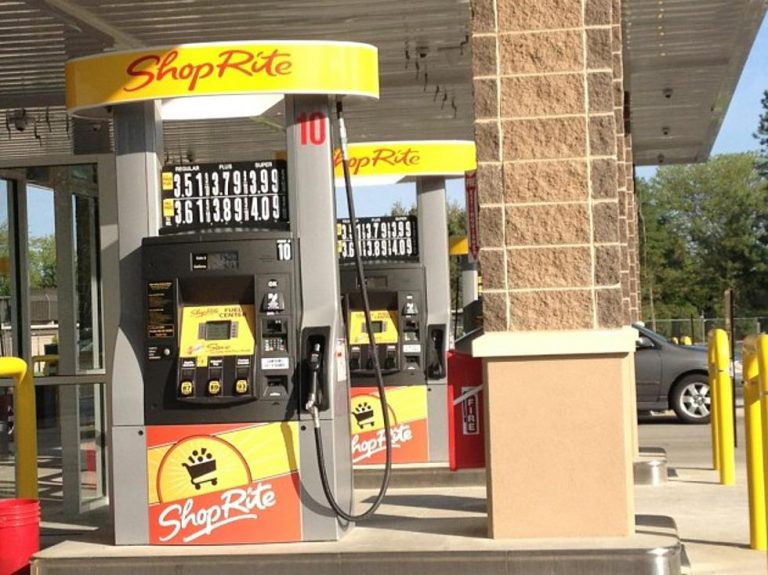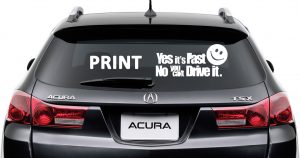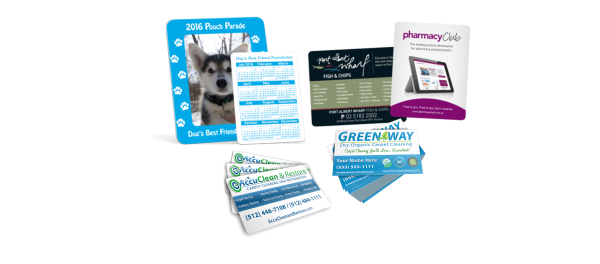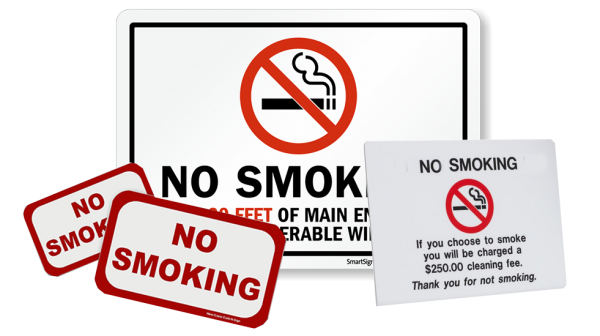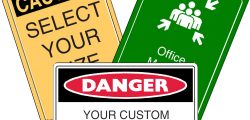Product Specs
Are boat lettering and boat decals the same thing?
While they are both similar, they do differ in purpose and use. Boat lettering is specifically used for numbering and lettering on boats. This includes, names, registration numbers, and hailing port designation. Boat lettering is individually cut from a solid piece of vinyl material with no print on the material. Boat lettering cannot be used for printing images, intricate designs, text effects, or gradients because it is cut from one solid colored sheet of vinyl.
Boat decals have your graphic printed on a high adhesive vinyl and are not made from individually cut pieces. Boat decals are not pre-masked due to the decal being a single piece of material. Having a single piece of material means that all spacing in your design will be printed onto the material and not cut into individual portions like boat lettering. Decals are designed for displaying logos and images. Images, colors, gradients, and letter effects are all printed onto the high adhesive vinyl material.
Are boat decals, boat graphics, and boat stickers the same product?
Decals, graphics, and stickers are used interchangeably to describe our boat decal product. The purpose of decals, graphics, and stickers is the same.
What are height requirements for boat lettering?
In most cases, boat lettering must be at least 3 inches in height and be block style letters for boat registration numbers. For hailing port identification, letters must be at least 4 inches in height but do not need to be block letters. We recommend checking or verifying local regulations for any specific height requirements.
Where is the best place on a boat to display a registration number?
In most cases, registration numbers are required to be displayed on the forward half of the boat (known as the bow of the boat) and as high above the waterline as possible. Registration numbers must be displayed on both sides of the boat (so make sure you change your quantity to two in order to receive a number for each side of your boat).
Can boat lettering and decals be submerged for long periods of time?
Boat lettering and decals are not intended to be submerged in the water for extended periods. Submerging lettering and decals for extended periods will deteriorate the adhesion and quality of the graphics. Only place lettering and decals above the waterline to ensure they work properly and can be seen as per local or state regulations.
With boat lettering, will all of my individual letters/design elements be placed on the same sheet of transfer tape?
In most cases, the individual letters contained within your boat lettering will be appropriately spaced and placed on a single sheet of transfer tape, making installation quick and simple. However, if your boat lettering exceeds 48″ (for colors black and white) or 24″ (for all other colors) in both width and height, your lettering will be split and placed onto two sheets of transfer tape. You will also receive your boat lettering in multiple sheets if you are using three or more different colors. In this case, each separate color will be grouped together on its own sheet.
What is a hailing port? Do I need to identify it on my boat?
A hailing port is the port where the boat originates from. Boats are required by law to have the hailing port visible on the stern of all documented vessels in the United States. The hailing port includes a place, a state, or territory. States can be abbreviated on the boat.
Are there any laws regarding boat lettering and decals?
Laws on boat lettering and decals can typically be found through state and local ordinances. Common laws include lettering height (at least three-inch-high block letters for registration numbers and four-inch-high for hailing port designation), spacing letters from numbers using a hyphen or space, and color of letters contrasting the color of the vessel. We recommend checking with state and local boating laws for specific regulations.
Where would I find information on registering my boat?
Information on the boat registration process can typically be found on your state’s DMV or Parks and Wildlife website.
Do I need to register my boat?
Regulations for boat registration can vary by state. In most cases, boats that are motorized, used as commercial vessels, or sailboats that are 14 feet long or longer must be registered.
Do you provide registration or license stickers for boats?
We do not provide registration stickers. These are only available through state agencies (in most cases the DMV or Department of Parks and Wildlife are the issuing authorities). Place registration stickers adjacent to registration numbers on the forward half of the boat. These same issuing agencies typically provide you with specific requirements for placement of these stickers.
What material is your boat lettering and boat decal made from?
Boat lettering is cut from a thin, adhesive vinyl allowing for a sleek and seamless appearance on the boat. Boat decals are made from a high adhesive vinyl, which is the ideal material for watercraft decals.
Do you offer boat wraps?
We do not offer full or partial boat wrapping services.
Do you offer boat stripes or striping?
You can use our boat decals as a long thin strip for striping purposes. Please note that the maximum length of such a stripe is 33’. Further, we do not provide any professional installation for these extra long stripe decals.
What is the lifespan of your boat lettering and boat stickers?
With proper care, boat lettering and boat stickers can last 5+ years.
Will exposure to sun or the elements affect the boat lettering and decals?
Our boat lettering and boat decals are designed to withstand both direct sunlight and harsh elements.
Do you offer boat lettering and decals with a protective laminate?
Our boat decals contain a protective laminate but the lettering does not. Boat decals are digitally printed resulting in a permanent, durable image. The protective laminate adds more protection and durability to the decals. Boat lettering is made from a high quality vinyl that is resistant to fading and scratching. Assuming proper installation and regular care, no laminate is necessary to ensure your boat lettering will last for the long term!
How small or big can my boat lettering and decals be?
Boat lettering can be as small as 1 inch in height and as large as 23.5 inches in height. It’s important to note that registration numbers must be 3 inches in height to meet boating regulations. Boat decals range from 4 inches by 4 inches to 4 feet by 33 feet.
Can the boat decals and lettering be cut to shape? Individual letters?
Boat decals can be custom cut to shape (commonly known as contour cut) or custom cut with a border (commonly referred to as halo cut). Decals are not designed to be cut into individual letters. Please use boat lettering for this purpose. Decals with lettering or words will not be pre-masked or individually cut.
Boat lettering is only designed to be cut into individual letters and simple, one color graphics. These letters or numbers come pre-spaced and pre-masked with transfer tape for easy installation.
If I print my decal in more than one color am I charged more?
You will not be charged for additional colors used in your boat decal. Multiple colors for boat lettering will affect your price due to the production process and the inherent difference between the two products.
How thick are boat lettering and decals?
Boat decals are .015” thick, which is equivalent to 4 sheets of copy paper. Boat lettering is .002″ (2-mil or 50 microns) thick, which is the equivalent to half the thickness of a sheet of copy paper. In other words, whether you get lettering or a graphic you don’t need to worry about the aesthetics of these products. They will be thick and durable enough to last a long time but not detract from your gorgeous boat!
Do I have to use one of your templates for my lettering or decals?
It is not necessary to use templates to create lettering or decals. Our templates are available for convenience in creating whatever custom lettering or decals you may need or want for your boat. We also offer the option to upload your own design, create one from scratch within our design tool or get free design help.
Are boat stickers and lettering visible in the dark? Do you offer reflective decals or lettering?
Our stickers and lettering are not designed to be reflective or visible in the dark. Currently, we do not offer reflective boat decals or lettering.
Usage
Will the decal ruin or damage the paint on my boat?
In most cases, boat decals and lettering will not damage the paint on your boat when properly installed or removed. Decals and lettering are not suitable for installing on wet or uncured paint. Some materials, like unpainted wallboard, flexible materials, and material with anti-reflection or scratch resistant coatings may not be suitable for the use of decals or lettering.
Are decals completely waterproof?
Our boat lettering and decals are designed to be displayed in water environments. However, we do not recommend submerging your boat graphics for extended periods of time or trying to adhere them when the area of the boat is wet. Both boat decals and boat lettering are intended to be placed above the waterline.
Can lettering and decals be placed on wooden boats? What about fiberglass?
Yes, lettering and decals can be used on treated, smooth wooden surfaces. Untreated and porous wood surfaces and fiberglass are not suitable for adhering lettering or decals to. Rubber, silicone, or flexible plastics are also not suitable for adhering lettering and decals to.
Can graphics be applied to speed boats, power boats, jet skis, ski doos, and wave runners?
Lettering and graphics can be applied to a variety of watercraft and outdoor vehicles. With all watercraft, graphics should be placed in areas where they will not be submerged in water for extended periods of time. That means that graphics should be placed above the waterline of the craft. Make sure you know where the water line is on your vessel before you adhere graphics to it. Further, lettering and decals should be applied to smooth, non-porous surfaces in order to work properly for the long term.
Installation & Care
How do I install boat lettering and decals?
Installation differs slightly between boat lettering and boat decals, but both are easy to apply to a boat. In general, both lettering and decals will require a surface that is fully cured and clean of any boat wax, polish and dirt or grime. Both will also require at least a 24 hour set time to ensure a long lasting lifespan. In both cases, it is also ideal to install your lettering or graphics when the air and boat surface is between 60 and 90 F.
Boat Lettering:
The lettering comes pre-masked, meaning that there is a masking transfer tape over the top of the pre-spaced lettering. This allows the lettering to be installed as one piece and not letter by letter.
Begin installation by using masking tape to position the lettering in the desired location. Slowly peel away the protective backing of the lettering from top to bottom (this is not the pre-masked transfer tape) to begin adhering the lettering to the boat. As you peel away the protective backing you will hold the rest of your lettering at an angle away from the surface you are applying to. This will ensure that nothing sticks to your surface until you slowly squeegee it into place as per below.
We do not recommend removing the backing entirely before application, as this would cause difficulty in application. Use a squeegee or flat edge to apply the lettering carefully, moving from top to bottom as you peel away the backing. Once applied, slowly peel away the pre-masked film (on top of the lettering) to reveal the lettering. If lettering peels away with the pre-masked film, carefully replace the film and use the squeegee to further adhere lettering to the boat. If lettering continues to peel away the surface may not be suitable for adhesion.
Boat Decals:
Begin installation by removing the protective backing of the high adhesive boat decal and carefully placing the decal on the boat. Placement on the boat should be done with the utmost care and precision. Apply very light pressure initially to allow some wiggle for repositioning. Once in place, use a squeegee to firmly press the decal against the boat (working from top to bottom), releasing the adhesive residue. Allow the decal to sit 24 hours after installation before washing your boat or taking it out on the water.
What is the best way to clean the surface of my boat?
Always clean the surface of your boat immediately before application. It is recommended that you use good quality liquid dish detergent and lukewarm water to clean your boat (1 ounce of detergent per gallon of water). Soaps that contain waxes, oils, or lotions are not suitable for cleaning your boat. Some window cleaners may contain wax, so check the contents before using.
Dry the surface of the boat using a clean, lint-free paper towel or cloth. You may use a heat source to speed up the drying process. After drying, clean the surface again using a solvent-based cleaner to remove any wax residue from the boat. Do this by soaking a clean, lint free paper towel or cloth with a solvent-based cleaner. If the paper towel or cloth becomes dirty while cleaning, switch it with a unsoiled one to prevent the dirt from being smeared on the boat. Make sure the surface is completely dry before applying the decal or lettering.
Is a squeegee included with the purchase of boat lettering or decals?
By default an optional squeegee will be included. If you do not need a squeegee you can deselect this option on the design tool.
Will hot or cold temperatures affect the installation or lifespan of the lettering or decals?
Yes. It is recommend that both lettering and decals are installed when both the air and boat surface is between 60 and 90 F. When temperatures are above this range the adhesive may pre-adhere or act more aggressively making your installation more difficult as well as potentially making your lettering or graphic too stretchy. If the surface is too hot, move your watercraft indoors to let it cool before applying. It is also recommended that the surface of your boat stay above 60F for at least 12 hours after successful installation.
After this period, the lifespan of your lettering and/or decals should not be impacted as the temperature range of the product is -40 degrees fahrenheit to 225 degrees fahrenheit. We do recommend removing boat graphics and lettering above 40F.
Do I need to edge seal my lettering or graphics when I originally install them?
If you pay to have your lettering or graphics professionally installed they will edge seal your boat graphics. While you can do so as well using the correct tools and methodology, we’ve found that if the rest of our installation instructions are followed (clean and cured surface, correct air and boat surface temperature, required rest time before use), your graphics will do just fine without edge sealing them.
Does my decal have a backing? How do I remove it?
Both boat lettering and decals come with a protective backing to ensure that the adhesive side of the graphic is not damaged prior to installation. Remove the backing by carefully peeling it away 1 to 2 inches from the top of the decal. Stick the exposed adhesive side to the boat, then continue to pull away the backing while applying the decal or lettering. Do not remove the backing completely prior to installation. Slowly pulling away the backing while installing will prevent you from touching the adhesive or having the adhesive or lettering stick to themselves. If your lettering or decals stick to themselves this can permanently damage your product. We recommend thoroughly reading the installation instructions before beginning and using more than one person for larger lettering pieces and decals.
Can I wash my boat immediately after applying lettering or decals?
It is recommended that you do not wash your boat immediately after applying decals or lettering. Allow at least 24 hours for the lettering and decals to set on the surface before taking your boat out on that water or before washing your boat.
Will salt water deteriorate boat lettering and decals?
With proper installation and care your boat lettering and decals should not be affected by salt water. We recommend washing your boat, especially around the area of decals and lettering to prevent damage.
How do I best care for my boat lettering and decal?
Due to the nature of boating and the frequent exposure to water, it is advised that you clean the area around all lettering and decals, allowing them to air dry. Use a non abrasive cloth and water to clean decals and lettering.
What happens if bubbles form underneath the lettering or decal?
In some cases, bubbles may form during installation; they can be removed using a squeegee or soft plastic edge. Carefully push the bubble towards the edge of the lettering or decal to remove it. During initial installation it is possible to reposition lettering and decals to prevent bubbles from forming. Bubbles should not form after correct installation and during normal usage.
Will the color fade over time?
Boat letters and stickers are designed to be exposed to sunlight and will not fade when properly covered when the boat is not in use.
Will the color of the boat be different underneath the decal or lettering after I remove it?
In most cases, the color of your boat will not be different underneath graphics after you remove them. Fade resistant boat paint should ensure that the paint is not affected by direct sunlight, thus allowing stickers or decals to be displayed without changing the coloring due to UV ray blocking. Of course, depending on the quality of the boat’s paint job if lettering or a decal is in place for a number of years and then removed the area underneath the decal may differ from the color of a faded boat.
How do I remove boat lettering and decals? Will they leave behind a huge mess and lots of residue? Can removal damage the boat?
Removal of lettering and decals should be done carefully and in the right conditions to prevent damaging of the boat’s surface or paint. Use adhesive remover, a heat source (like a hair dryer), razor blade, and paper towels to assist you in removing lettering and decals. We’ve outlined full removal instructions for each material below:
Boat Lettering:
Due to the nature of the product, boat lettering requires time and patience in removing. Spray the lettering with an adhesive remover to help in peeling it away from the boat. Typically, using your fingernail can help to start to remove the edges of lettering. If lettering is not peeling away from the boat, use a small razor blade to help pull away the film from the surface. Take care not to scratch the surface of the boat during removal, especially when using a razor blade. Once the edges are removed, slowly peel down the rest of the graphic. Removal of lettering may result in excess residue left on the boat; use adhesive remover or glass cleaner that doesn’t adversely damage boat paint to help clean the area where residue remains.
It is recommended that you remove the lettering in temperatures above 40 degrees fahrenheit; lettering can become brittle in cold weather, causing it to break during removal. Using a heat source (160 to 200 degrees fahrenheit) to assist in removal is possible, but take care not to damage the boat’s surface while doing so. If your boat is stored in warmer climates, a heat source may not be necessary. Heat sources are not necessary with lettering attached to glass (in temperatures warmer than 60 degrees fahrenheit). The age of the graphic and prolonged exposure to outdoor elements may increase the time it takes to remove it from the boat’s surface.
Boat Decals:
The high-adhesive boat decals can also require a small heat source (like a blow dryer) to remove from the surface of your boat. When using a heat source, carefully pass over the decal repeatedly to loosen it from the boat. Once loosened, slowly peel the decal away from the boat starting from the top edge and working down, using a squeegee or straight edge to aid in removal. There may be residue left on the surface of the boat after removing the decal. We recommend using a light cleaning solution or adhesive remover to clean the area where residue is left over. Use glass cleaner that is safe for use with paint to finish cleaning the surface of the boat.
It should be stressed that decals should be removed slowly with the aid of a heat source to ensure that the surface of the boat is not damaged. Improper removal could result in damaging of the boat, including paint and coating removal.

